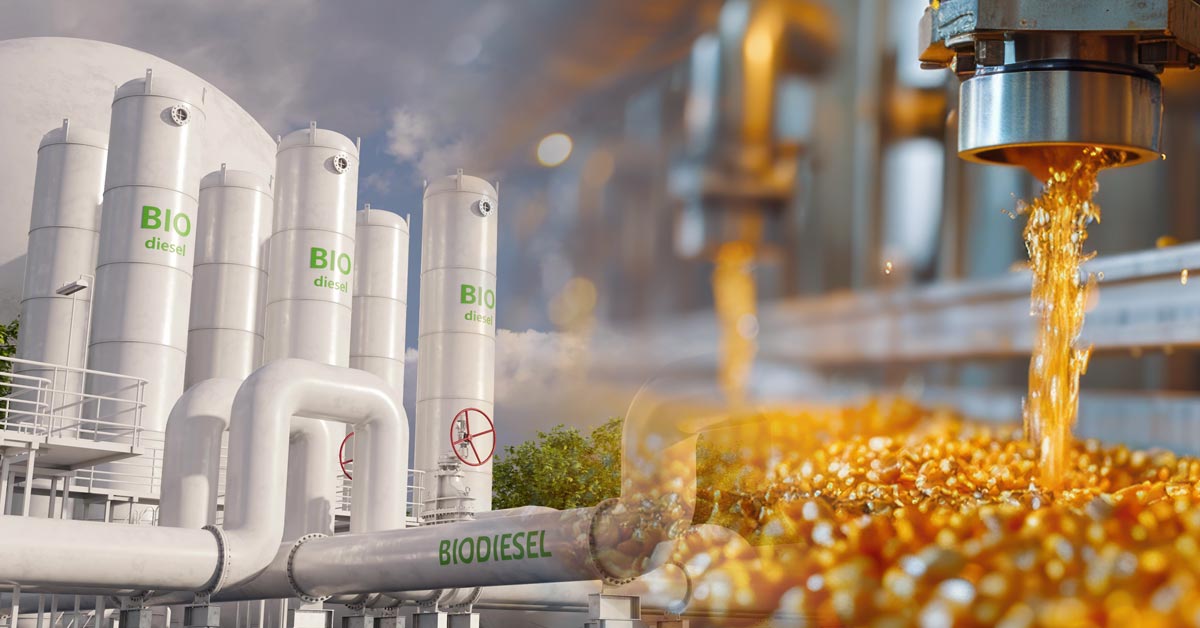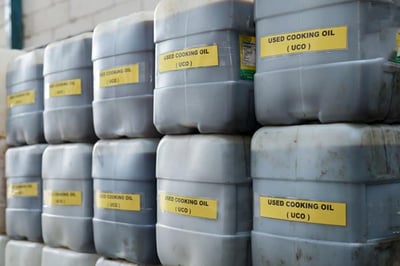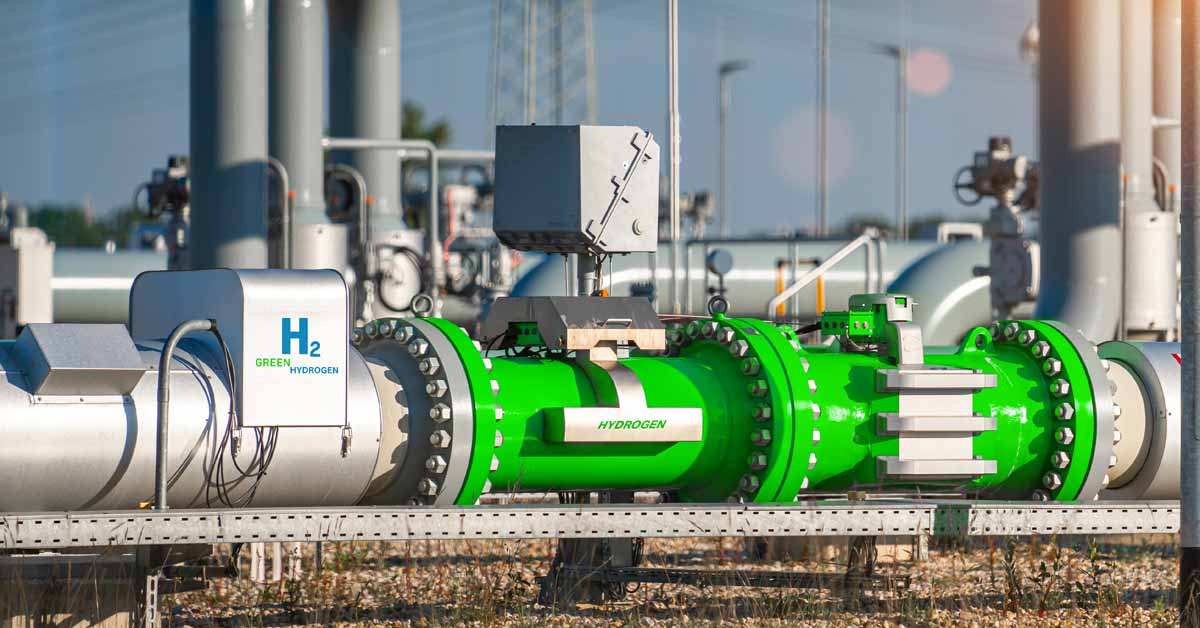5 min read
Feedstock Fundamentals: What Are Biofuels Made From?
ResourceWise
:
May 28, 2025 10:48:04 AM

Biofuels are reshaping the way we consider energy and fuel in the world. But a crucial aspect often overlooked in public discussions are the feedstocks—the raw materials from which biofuel is made.
Understanding feedstocks not only helps contextualize biofuel production but also offers insights into the environmental and economic impacts of different biofuel types. This post will dive into the most important elements of feedstocks within the renewables value chain.
What Are Biofuel Feedstocks?
In biofuel production, feedstock is any biological material that can be converted into fuel. These materials can be derived from crops, waste products, or even algae. The type of feedstock used directly influences the fuel’s carbon intensity, production cost, and suitability for specific applications.
Think of feedstocks as the raw materials for biofuel. They are the ingredients of biofuel and are a vital part of the sustainability process. Accordingly, these resources must be renewable without disrupting other processes such as land use for food production or deforestation to create feedstock crops.
Feedstocks are typically categorized into three broad groups:
1. First-Generation (Conventional) Feedstocks: Derived from food crops like corn, sugarcane, and vegetable oils. They are used in established biofuel production methods such as ethanol and biodiesel.
2. Second-Generation (Advanced) Feedstocks: Derived from non-food biomass like agricultural residues, forestry waste, and used cooking oil. They offer improved sustainability and reduced competition with food resources.
3. Third-Generation (Emerging or Experimental) Feedstocks: Includes high-yield organisms like algae and genetically modified crops. While still under development, they hold promise for scalable, low-impact biofuel production.
Each category represents a different level of technological maturity and environmental impact.
What are the Main Types of Biofuel Feedstocks?
Below is a comprehensive breakdown of the primary feedstocks currently used in biofuel production, many of which are detailed in our post on biofuels.
1. Starch-Based Feedstocks

- Type: First-generation
- Biofuel Produced: Ethanol
- Examples: Corn, wheat, barley
- Use Case: Widely used in gasoline blending (e.g., E10, E85)
- Origin: Grown primarily in agricultural settings in the US, Canada, Europe, and parts of Asia
- How It's Made: Starch is converted to sugars through enzymatic hydrolysis, then fermented to produce ethanol.
- Pros: Mature technology, large-scale infrastructure
- Cons: Food vs. fuel debate, significant land and water use
2. Sugar-Based Feedstocks

- Type: First-generation
- Biofuel Produced: Ethanol
- Examples: Sugarcane, sugar beet
- Use Case: Common in tropical regions for vehicle fuels
- Origin: Brazil (sugarcane), Europe (sugar beet)
- How It's Made: Sugars are directly fermented into ethanol, making the process more efficient than starch conversion.
- Pros: Higher energy yield per hectare (especially sugarcane), rapid conversion
- Cons: Land-use concerns, regionally constrained by climate
3. Oil-Based Feedstocks

- Type: First-generation
- Biofuel Produced: Biodiesel
- Examples: Soybean, rapeseed (canola), palm oil, sunflower oil
- Use Case: Diesel engine replacement, heating oil alternatives
- Origin: US (soy), EU (rapeseed), Southeast Asia (palm)
- How It's Made: Transesterification of oils into fatty acid methyl esters (FAME)
- Pros: High oil yield, compatible with existing diesel engines
- Cons: Deforestation concerns (especially with palm oil), competition with food crops
4. Waste and Residual Oils

- Type: Second-generation
- Biofuel Produced: Renewable diesel, biodiesel
- Examples: Used cooking oil (UCO), animal fats, grease trap waste
- Use Case: Heavy-duty transport, aviation fuels (when processed into HEFA – Hydroprocessed Esters and Fatty Acids)
- Origin: Industrial kitchens, meat processing facilities
- How It's Made: Requires pre-treatment to remove contaminants, then processed similarly to plant oils
- Pros: Reduces waste, low carbon intensity
- Cons: Limited supply, inconsistent quality
5. Cellulosic Biomass

- Type: Second-generation
- Biofuel Produced: Cellulosic ethanol, renewable diesel, syngas
- Examples: Woody biomass (wood chips and other waste), forestry residues, corn stover, switchgrass
- Use Case: Emerging markets, advanced fuels
- Origin: Agricultural and forestry operations
- How It's Made: Requires breakdown of cellulose into fermentable sugars via enzymatic or chemical hydrolysis
- Pros: Abundant, does not compete with food production
- Cons: Complex conversion processes, higher production cost
6. Algae

- Type: Third-generation
- Biofuel Produced: Biodiesel, jet fuel, ethanol
- Examples: Microalgae species with high lipid content
- Use Case: Aviation fuel, marine fuels (R&D and pilot phases)
- Origin: Cultivated in controlled aquatic systems or photobioreactors
- How It's Made: Algae are harvested, lipids extracted, and converted into fuel via various chemical processes
- Pros: Extremely high yield per acre, can grow in non-arable land
- Cons: High cost, scaling challenges
Why are Some Feedstocks Chosen Over Others?
Understanding the why and how of feedstock adoption can shed some light on why certain biofuels are used over others. Several factors contribute to feedstock preference:
Availability and Cost
- Corn and sugarcane dominate in regions with established agriculture and subsidies.
- Waste oils and animal fats are cost-effective but limited in scale.
Climate and Regional Suitability
- Sugarcane thrives in tropical regions, while rapeseed is better suited for temperate climates.
- Energy Yield and Efficiency
- Sugar-based crops offer better ethanol yields than starch-based crops.
- Algae promises the highest theoretical yield but remains commercially unviable.
Carbon Intensity
- Second- and third-generation feedstocks usually offer a lower carbon footprint.
- Lifecycle emissions matter for policy-driven markets (e.g., Low Carbon Fuel Standard).
Infrastructure Compatibility
- Feedstocks like used cooking oil are compatible with existing renewable diesel infrastructure.
Sustainability Goals
- Feedstock choices are increasingly influenced by deforestation risks and sustainability impacts (especially with palm oil).
What is the Difference Between Biomass and Feedstock?
Though often used interchangeably, biomass and feedstock refer to related but distinct concepts.
Biomass is a broad term that encompasses all organic material derived from living or recently living organisms:
- Trees
- Algae
- Agricultural Residues
- Animal Waste
It's a naturally occurring resource and serves as the raw biological matter that can be converted into energy.
Feedstock, on the other hand, is a more specific term referring to the portion of biomass (or other raw material) that is selected and processed for fuel production. In biofuel contexts, feedstock is the input material—such as corn starch, used cooking oil, or wood chips—that is deliberately chosen and refined to produce bioethanol, biodiesel, or biogas.
In short, biomass is the potential, while feedstock is the purpose-driven application of that potential in industrial or energy-producing processes.
What are the Best-Suited Feedstocks by Application?
Not all feedstock is suitable for specific applications. In fact, certain feedstock types are necessary depending on the context and energy requirements.
Application |
Best-Suited Feedstocks |
|
Light-Duty Vehicles (Ethanol Blends) |
Corn, Sugarcane |
|
Heavy-Duty Transport (Diesel Alternatives) |
Soybean, Used Cooking Oil, Animal Fats |
|
Aviation Fuels |
HEFA from Waste Oils |
|
Rural Electrification (Biomass Gasification) |
Wood Chips (Woody Biomass), Agricultural Residues |
Why Use Biofuels and Renewable Feedstocks to Decarbonize?
When it comes to reducing greenhouse gas emissions, the choice between biofuels or fossil fuels plays a critical role. Why use renewable feedstocks to produce biofuels when fossil fuels are still readily available?
Despite any improvements in efficiency or emissions, fossil fuels like coal, oil, and natural gas are simply carbon-intensive energy sources. Their feedstock is derived from carbon-heavy resources, and burning them releases considerable amounts of carbon dioxide that was previously locked away underground. No matter how it's used, the process directly contributes to climate change.
In contrast to fossil fuels, biofuels are produced from renewable biological materials such as crops, agricultural residues, or waste oils. While they still emit CO₂ when burned, the carbon released is part of a short-term carbon cycle—absorbed by plants during their growth. This makes biofuels a lower-carbon alternative to fossil fuels.
Biofuels and their feedstocks, as fossil fuel alternatives, are vital to the global transition to reduce carbon and prevent catastrophic climate change. They are particularly valuable in hard-to-electrify sectors like aviation, marine transport, and heavy industry.
Choosing biofuels as a fossil fuel alternative is one of the most immediate and scalable ways to decarbonize the energy system while utilizing existing infrastructure.
Feedstocks: Shaping the Future of Biofuels
Biofuel feedstocks are more than just inputs—they are the foundation that defines the fuel’s sustainability, availability, and environmental impact.
As technology advances and climate policies tighten, the focus will increasingly shift to non-food, low-carbon, and waste-based feedstocks. Understanding this feedstock landscape is key to making informed decisions about biofuel production, investment, and adoption.




